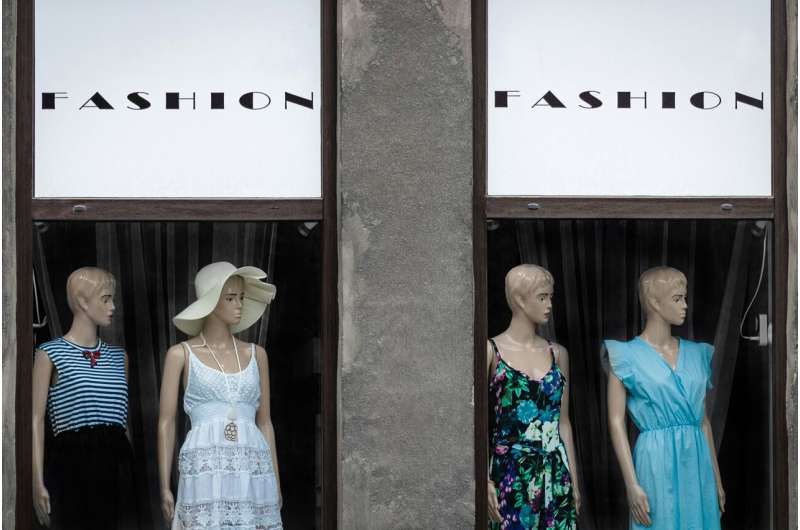How Europe is using taxes to slow down fast fashion

Stephanie Baum
scientific editor

Andrew Zinin
lead editor

Did you know that making one cotton T-shirt uses around 2,700 liters of water, around the amount that a person drinks in three years? may offer cheap, on-trend clothes, but it also generates an annual 12 kg of textile waste per person in Europe, only 1% of which is recycled to make new garments.
The fast fashion industry produces too much, too fast, too cheap, but there are ways to slow it down. In recent years, the EU and European countries have begun to propose and implement that do just this.
EU: No more tax breaks for fast fashion
Until 2021, millions of packages from platforms such as Shein and Temu—all those valued at under €22—arrived in Europe without paying VAT. This gave them an unfair advantage over local businesses, but since 2021 .
The European Commission , and has proposed a processing fee of €2 for each shipment to the EU. It also wants to eliminate the current €150 import tariff exemption, so that even small orders will pay customs duties.
These measures would prevent non-EU sellers from artificially splitting orders, and would strengthen control over products that are often manufactured under unsustainable conditions or with poor labor practices. The impact could be huge; in 2024, 91% of all e-commerce shipments valued at less than €150 came from China.
In 2024, Brussels approved to combat . From 2026, brands will not be able to present themselves as "carbon neutral" or "eco-friendly" without verifiable evidence, nor will they be able to hide information about the durability or repairability of garments.
France: Tax per fast-fashion garment
France is the first European country to approve a tax on fast fashion. In June 2025, the French Senate gave the green light to a law introducing a . Ultra-fast fashion brands will have to pay an extra €5 per item, which will make things like cheap T-shirts, dresses and trousers particularly expensive. The figure will gradually increase to €10 in 2030, doubling the tax in just five years.
The tax will depend on the environmental impact and practices of each company, and will not exceed 50% of the sales price excluding VAT.
With this measure, the French government is sending a clear message: Extremely cheap garments, designed to last barely a season, must pay for the damage they cause. At the same time, brands that manufacture more durable, recyclable clothing with a smaller environmental footprint are rewarded. This model is inspired by the environmental taxes already applied to fuels and single-use plastics.
UK: A penny per garment
In 2019, a British Parliament committee on every garment sold to fund textile collection and recycling.
Although the government did not implement the measure, the proposal sparked a debate on the policy approach of Extended Producer Responsibility, whereby brands pay according to the waste they generate. The lower the quality of their products, the higher the cost; the more durable and recyclable they are, the less they have to pay.
Sweden, Netherlands, France: Repairing instead of replacing
Other countries have chosen to incentivize repairs. In Sweden, VAT on clothing and footwear repairs has been reduced from 25% to 12%, while in the Netherlands, a reduced rate of 9% applies to services such as sewing repairs, replacing zippers and adjusting sizes.
In France, from 2025 onward, a reduced rate of 5.5% will apply to textile and footwear repairs, along with a "repair voucher" that discounts part of the cost for consumers who have their clothes repaired in certified workshops.
These measures have one clear objective: making it cheaper to replace a broken zipper than it is to buy a whole new garment.
Spain: Advanced regulations, lagging taxation
In Spain, stipulates that from 2025 onwards, textile brands must finance collection and recycling systems, and provide information on the durability and repairability of their products. This is a step forward, as it forces companies to bear costs that—up to now—have been covered by local authorities and taxpayers.
However, taxation remains a major challenge. Taxes or tax incentives such as those in France, Sweden and the Netherlands have not yet been adopted, leaving Spain lagging behind in this area.
Do these measures work?
The effects of tax mechanisms are already being felt. The elimination of exemptions has leveled the playing field and forced large international platforms to modify their pricing and logistics strategies.
Reduced VAT on repairs is revitalizing local workshops, benefiting small businesses, and gradually changing consumer habits. New taxes, such as those in France, will make disposable clothing more expensive, forcing big brands to improve their design, traceability and materials.
Together, taxation and regulations seek to change the logic of the textile industry. Cheap, disposable items should cease to be the most attractive option, and repairing, reusing or buying quality clothing should become the norm. If these measures are consolidated, the European textile industry could become one of the most advanced in terms of sustainability, positioning Europe as a global leader in the fight against fast fashion.
Provided by The Conversation
This article is republished from under a Creative Commons license. Read the .![]()





















